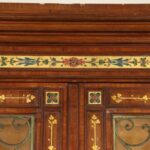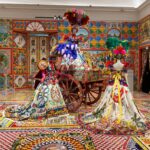Gino Sarfatti and Arteluce
‘Lamps do not have to be beautiful. In nature, there is no such thing as beautiful and ugly.
The butterfly is beautiful and the toad is beautiful.
The butterfly flies on flowers.
The toad swims in the pond’.
Coming from a family dedicated to the food trade, due to sanctions by the League of Nations and the consequent failure of the business, Gino Sarfatti was forced to leave his studies to devote himself to work.
What turned his fortunes around was a family friend who owned a glass manufacturing company in Murano and introduced him to the world of lighting.
He then decided to move to Milan to open his first company, Lumen, which immediately became one of the most important in the sector. Being a minority partner, he decided to leave the company to found a lighting workshop: Arteluce; the first store was in what is now Corso Matteotti (Littorio at the time).
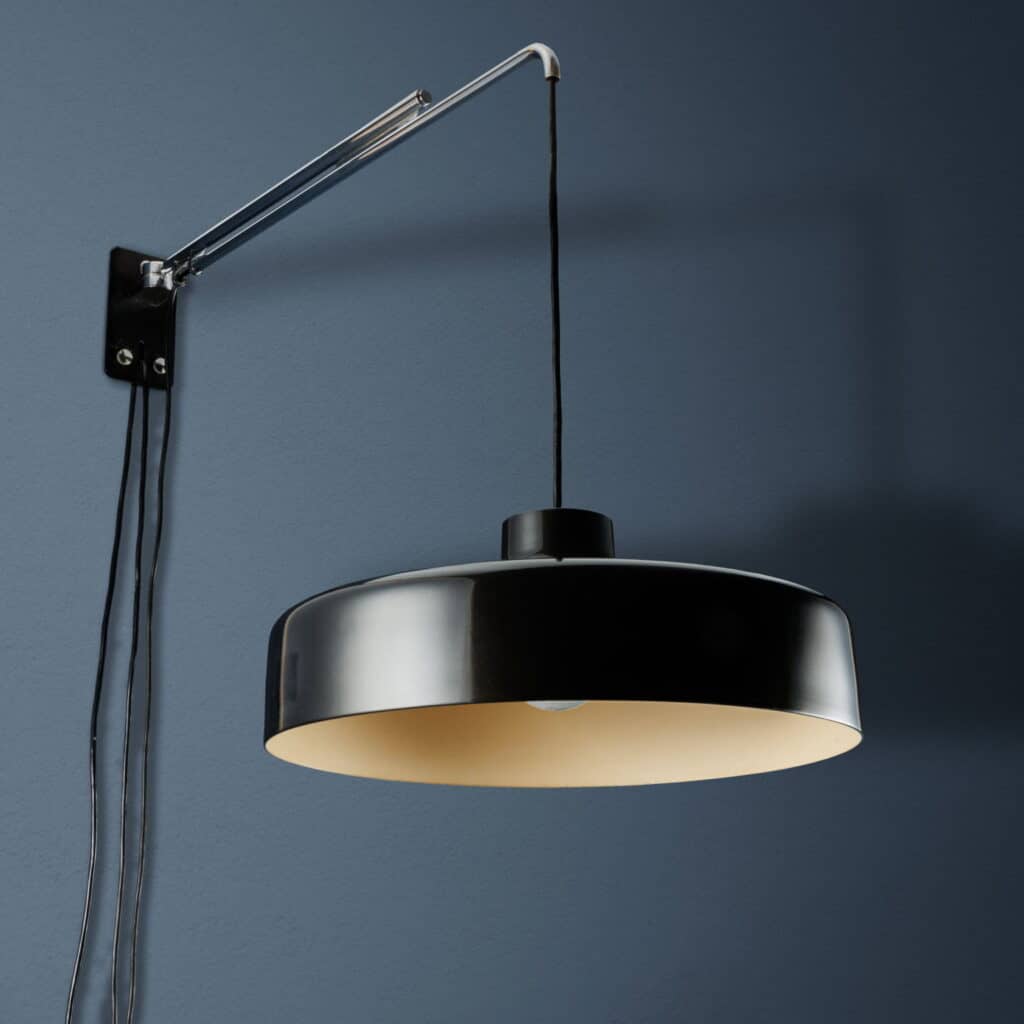
This first phase was characterised by an entirely hand-crafted dimension, where the design did not come from a drawing as much as from a true intuition of function, but also from an analysis of the environment, its physical and ‘human’ characteristics, as a place that must respond to the needs of the inhabitants and new lifestyles. According to his philosophy, only this careful analysis can lead to a formal evolution too.
Great attention was paid to working tools, which are never purchased but self-made, not only for economic
reasons. With customised tools it could be possibile to aspire to the realisation of a distinct and customised finished product.
Precisely in this perspective of continuous experimentation and listening to the needs of the public, the first production was characterised by the coexistence of lamps that recalled the historicist taste, still much appreciated, with others with a more modern and rational style.

In spite of the racial laws, the company still managed to keep its production going, always appearing in famous magazines such as Domus and Stile, and managing to participate to the 7th Triennale in 1940. But Gino was aware of the danger, and decided to move his family home near the Swiss border, which he crossed in a daring escape, forced into exile for some time.
But even in this case his far-sightedness was able to ensure that Arteluce did not come to a complete halt, having granted power of attorney with full powers to Pinuccia Azzaroni Bassani, his secretary and first accountant: although slow, production continued despite Gino’s enforced absence and the limited availability of raw materials.
The return after the Liberation was immediate, production was immediately raised to the highest level, also thanks to the various projects that Gino had realised during his enforced absence and which he was eager to implement. He was now free of the “bourgeois” constraints that had affected production in previous years: Milan had to be rebuilt and for this, leading figures of rationalism emerged, such as Gio Ponti, BBPR, Marco Zanuso and with them many others.
It was in 1953 that the Arteluce shop was redesigned, entrusted to Zanuso himself, with a result that was appreciated by Ponti himself, who published it with great prominence in his magazine Domus: Sarfatti had understood that the aesthetics of the shop was itself the image of the company and the basis of its communication with customers.
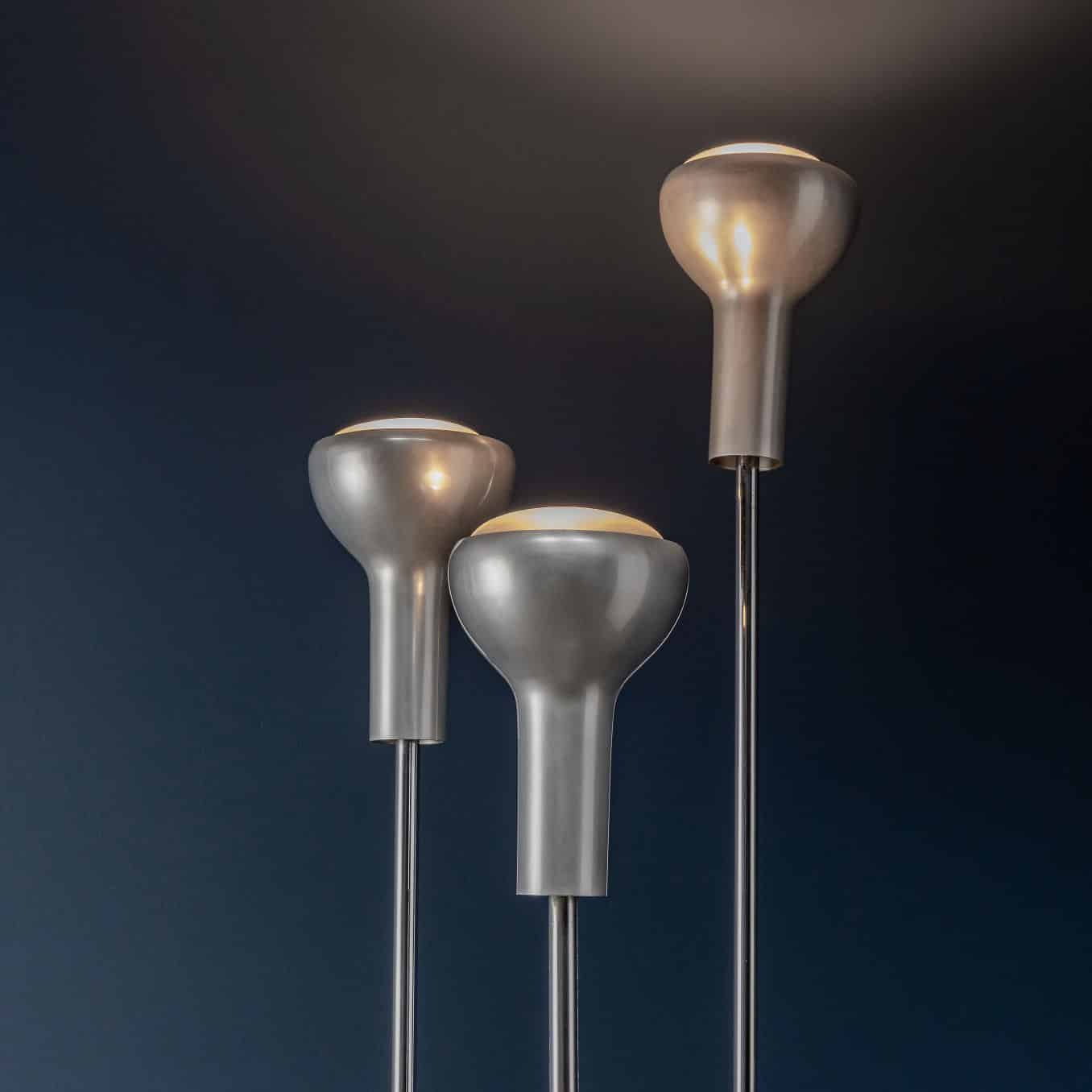
Fundamental in these years was the contact with Vittoriano Viganò, who first took care of the renovation of the Sarfatti house and in 1950, when Gino made a trip to the USA, he was given the artistic direction of Arteluce, which proved to be fundamental for the company. Between the two there was a true partnership, one concentrating more on the product and the other on architecture.
The following years were characterised by an intense and attentive production, and there was no lack of recognition, as evidenced by the participation in major exhibitions and competitions, such as the Triennale and the Compasso d’Oro, where his lamps distinguished themselves by winning several awards. These numerous prizes serve as tangible evidence that the 1950s had Sarfatti himself among the protagonists of design.
Once again, his lamps are characterised by a focus on spatiality, to be understood both as the ability of the lamps themselves to move or in any case of their relationship with the environment, and in a literal sense, often recalling the shapes or orbits of celestial bodies. One of the main characteristic of these years was also a certain modularity, with a real sampler of parts that were assembled from time to time in different ways, to create products that were different from one another, now also with a new focus on new technologies in the field of light bulbs.
ArteLuce’s production definitely became more coherent and organic.
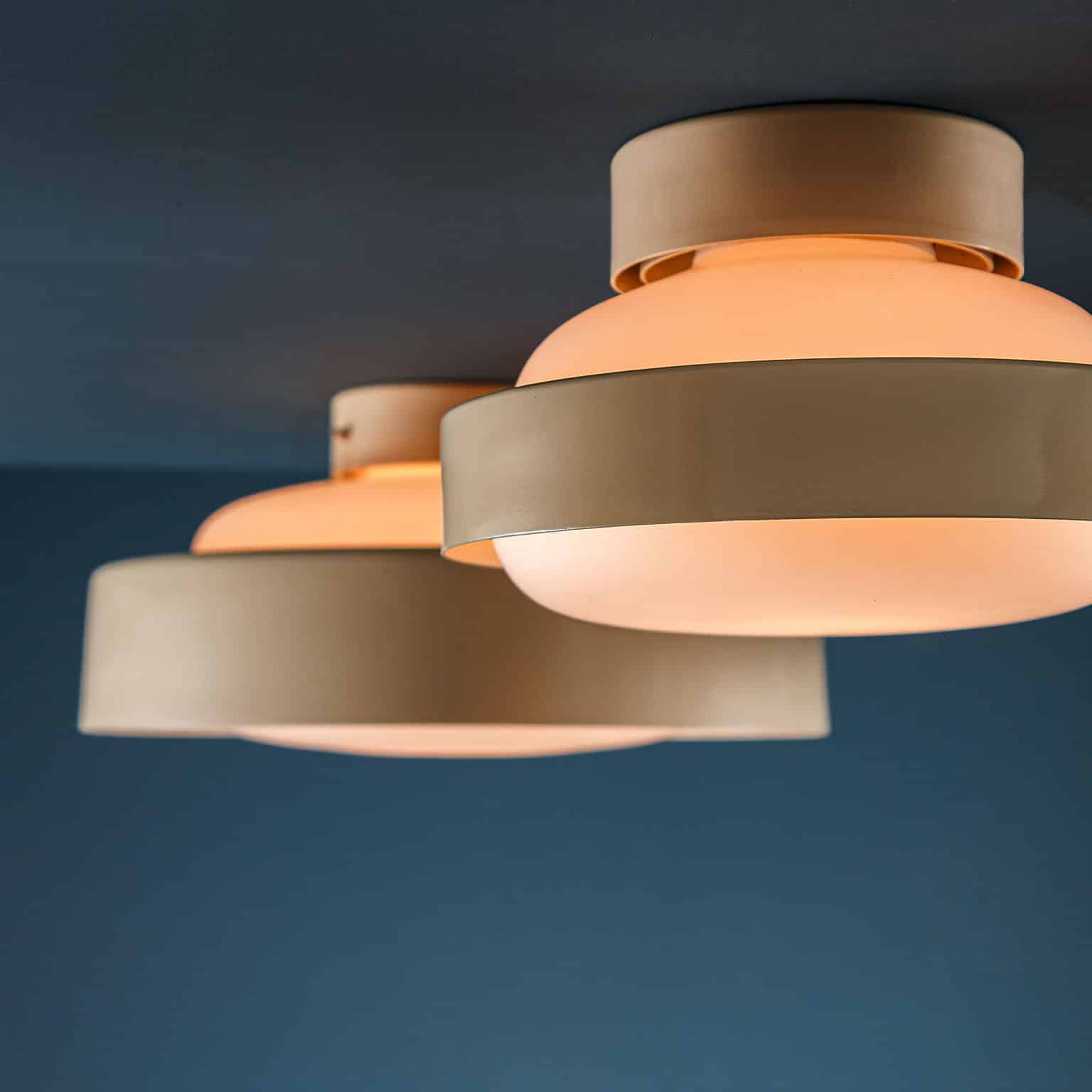
The 1960s marked a turning point for the company: the first catalogue dates back to 1961, where articles designed by Gino Sarfatti are now presented alongside many others by different designers.
In 1962 another big change: the historic shop in Via Matteotti was closed for a larger space in Via della Spiga, designed by Viganò. The number of orders increased more and more, especially customised ones, making Arteluce one of the most sought-after companies in the nautical fittings sector.
That same year Gino’s son, Riccardo, and his wife Sandra Severi, both students of architecture at the Milan Polytechnic University, began to work at the
company. They were able to bring new strength and dynamism to a company that was facing an increasingly expanding market. Great impetus was given to production methods, thanks to the purchase of machinery and industrial tools.
Despite this, the exponential increase in orders and the company’s commitment made it necessary to bring in external figures, and so Sarfatti, on 24 December 1973, decided to sell the entire business to the Flos group. This crucial step constituted a clear break with the world of Italian and international design, as Gino retired to his home in Griante on Lake Como to devote himself to his family and his other great passion: philately.

Bibliography:
Marco Romanelli, Sandra Severi, Gino Sarfatti. Opere scelte 1938-1973, Silvana Editoriale, Cinisello Balsamo, 2012.



